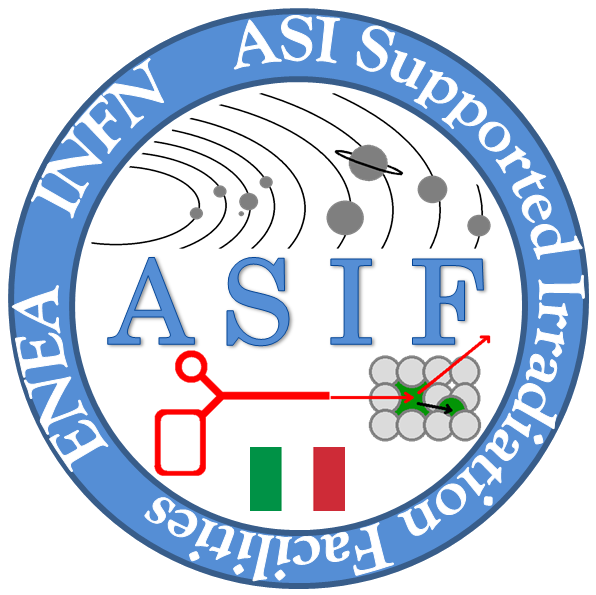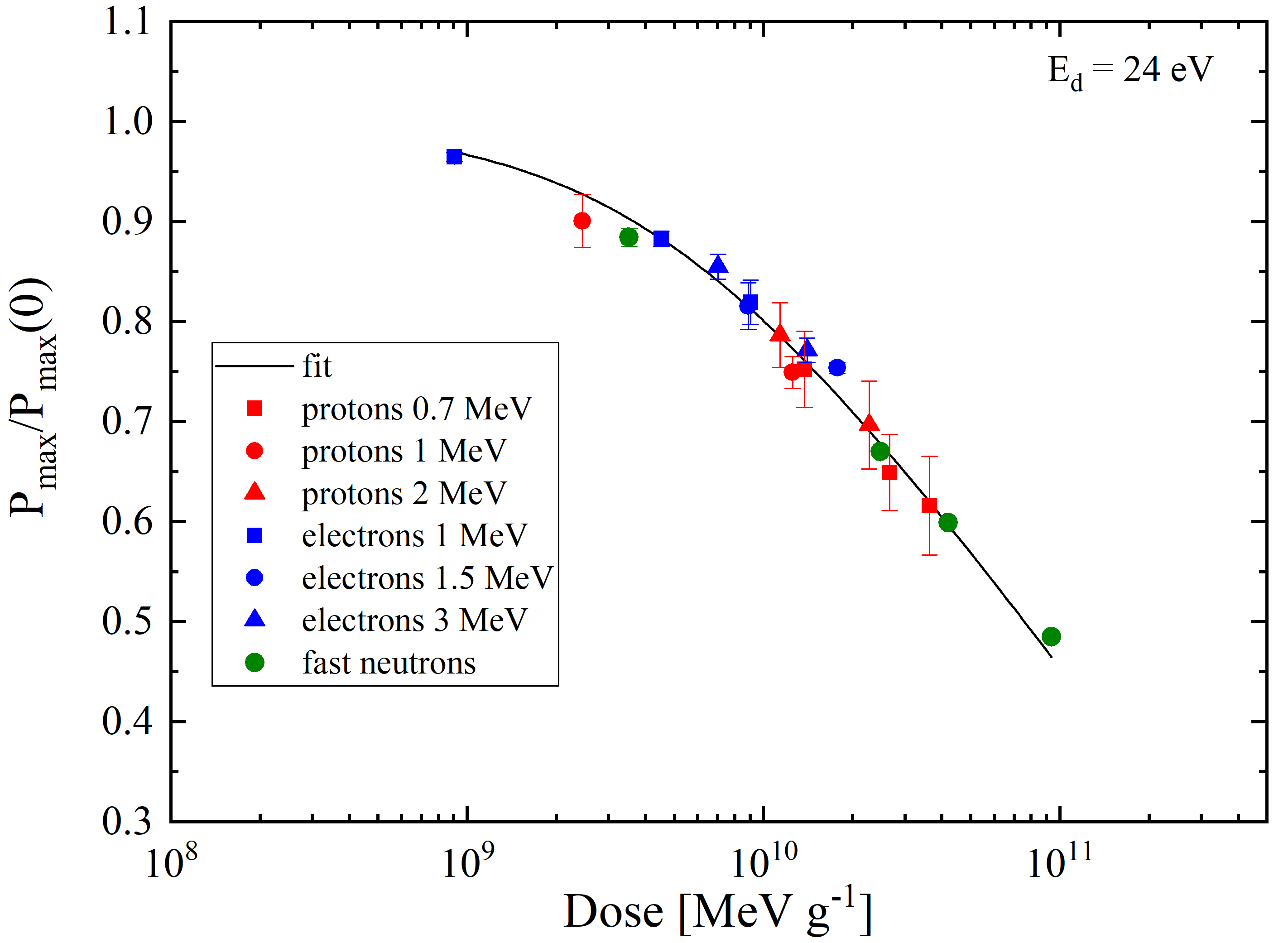HelMod-4 - the solar modulation modelused within SR-NIEL framework - is a well-known 2D Monte Carlo model to simulate the solar modulation of galactic cosmic rays(e.g., [HelMod (2020)], Chapter 8 of [Leroy and Rancoita (2016)]).. The model is based on the Parker transport equation which contains diffusion, convection, particle drift and energy loss. Following the evolution of the solar activity in time, we are able to modulate the local interstellar spectra (LIS) of cosmic ray species down to Earth's location inside the heliosphere. The HelMod forecasting of selected cosmic rays species is illustrated in this webpage (see also [Boschini et al. (2022b)]).
In the current HelMod version 4 the modulation process, based on Parker’s equation, is applied to the propagation of GCRs in the inner and outer heliosphere, i.e., including the heliosheath. In fact, HelMod demonstrated to be capable of reproducing the fluxes observed by the Voyager probes in the inner and outer regions of heliosphere up to its border. The HelMod model reproduced protons, antiprotons, nuclei and electrons cosmic rays spectra observed - during solar cycles 23–24 and before - by several detectors, for instance, PAMELA, BESS, HEAO-3, ACE and AMS-02 (e.g., see [HelMod (2022)] and Selected published or in press HelMod spectra). In particular, the unprecedented accuracy of AMS-02 observations allowed one a better tuning on how solar modulation mechanisms are implemented inside the model.
Furthermore, the GalProp-HelMod (2016) join effort allowed one to determine local interstellar spectra (LIS) of protons, antiprotons, ions and electrons, whose set is gradually extended. The already available LISs of cosmic rays species - from which the HelMod modulated spectra can be derived - are listed in HelMod website. There, in fact, a user can require the HelMod spectra for specific past and future time periods or refer to published datasets (e.g., those from AMS-02, Pamela, etc.). Currently these spectra are available for cosmic rays ions with Z up to 28 can be obtained from sr-niel website as well and employed for estimating the number of single event effects in a device during a mission.
Bibliography
[Bobik et al. (2012)] Bobik, P. et al. (2012), Systematic Investigation of Solar Modulation of Galactic Protons for Solar Cycle 23 Using a Monte Carlo Approach with Particle Drift Effects and Latitudinal Dependence, Astrophys. J. 745:132, doi:10.1088/0004-637X/745/2/132.
[Bobik et al. (2016)] P Bobik, M J Boschini, S Della Torre, M Gervasi, D Grandi, G La Vacca, S Pensotti, M Putis, P G Rancoita, D Rozza, M Tacconi and M Zannoni, On the forward-backward-in-time approach for Monte Carlo solution of Parker's transport equation: One-dimensional case. Journal of Geophysical Research: Space Physics 121(5):3920–3930, 2016. 2015JA022237.
[Boschini et al. (2017)] Boschini, M. J. et al. (2017Boschini M J, Della Torre S, Gervasi M, Grandi D, Johannesson G, Kachelriess M, La Vacca G, Masi N, Moskalenko I V, Orlando E, Ostapchenko S S, Pensotti S, Porter T A, Quadrani L, Rancoita P G, Solution of Heliospheric Propagation: Unveiling the Local Interstellar Spectra of Cosmic Ray Species Astrophys. J. 840:115, 2017
[Boschini et al. (2018a)] Boschini M J, Della Torre S, Gervasi M, Grandi D, Jóhannesson G, La Vacca G, Masi N, Moskalenko I V, Pensotti S, Porter T A, Quadrani L, Rancoita P G, Rozza D, Tacconi M, HELMOD In The Works: From Direct Observations To The Local Interstellar Spectrum Of Cosmic-Ray Electrons Astrophys. J. 854:94, 2018
[Boschini et al. (2018b)] Boschini M J, Torre S, Gervasi M, Grandi D, Jóhannesson G, Vacca G, Masi N, Moskalenko I V, Pensotti S, Porter T A, Quadrani L, Rancoita P G, Rozza D, Tacconi M, Deciphering the Local Interstellar Spectra of Primary Cosmic-Ray Species with HelMod Astrophys. J. 858:61, 2018
[Boschini et al. (2019)] M.J. Boschini, S. Della Torre, M. Gervasi, G. La Vacca and P.G. Rancoita, The HelMod Model in the Works for Inner and Outer Heliosphere: from AMS to Voyager Probes Observations, Advances in Space Res 64 (2019), 2459-2476 - https://doi.org/10.1016/j.asr.2019.04.007 -; available also at the website: https://arxiv.org/abs/1903.07501.
[Boschini et al. (2020a)] Boschini M J, Torre S, Gervasi M, Grandi D, Jóhannesson G, Vacca G, Masi N, Moskalenko I V, Pensotti S, Porter T A, Quadrani L, Rancoita P G, Rozza D, Tacconi M, Deciphering the Local Interstellar Spectra of Secondary Nuclei with the Galprop/Helmod Framework and a Hint for Primary Lithium in Cosmic Rays Astrophys. J. 889:167, 2020
[Boschini et al. (2020b)] Boschini M J, Torre S, Gervasi M, Grandi D, Jóhannesson G, Vacca G, Masi N, Moskalenko I V, Pensotti S, Porter T A, Quadrani L, Rancoita P G, Rozza D, Tacconi M, Inference Of The Local Interstellar Spectra Of Cosmic Ray Nuclei Z<=28 With The GalProp-HelMod Framework, Astrophys. J. Supplement 250(2):27, September 2020 and available At ArXiv:2006.01337
[Boschini et al. (2021)] M J Boschini, Della S Torre, M Gervasi, D Grandi, G Jóhannesson, La G Vacca, N Masi, I V Moskalenko, S Pensotti, T A Porter, L Quadrani, P G Rancoita, D Rozza and M Tacconi, The Discovery of a Low-energy Excess in Cosmic-Ray Iron: Evidence of the Past Supernova Activity in the Local Bubble, The Astrophysical Journal 913(1):5, May 2021.
[Boschini et al. (2022a)] M.J Boschini, Della S Torre, M Gervasi, D Grandi, G Jóhannesson, La G Vacca, N Masi, I V Moskalenko, S Pensotti, T A Porter, L Quadrani, P G Rancoita, D Rozza and M Tacconi, A Hint of a Low-energy Excess in Cosmic-Ray Fluorine, The Astrophysical Journal 925(2):108, January 2022.
[Boschini et al. (2022b)] M J Boschini, Della S Torre, M Gervasi, La G Vacca and P G Rancoita, Forecasting of cosmic rays intensities with HelMod Model, in press on Advances in Space Research ():, 2022.
[GalProp-HelMod (2016)] GalProp-HelMod (2016). As advertised on the GALPROP website, HelMod website can be used as a service package to seamlessly calculate the effects of the heliospheric modulation for GALPROP output files. FROM GalProp homepage: "We are pleased to inform the community of the launch of a new service HelMod, which can be used to seamlessly calculate the effects of the heliospheric modulation for GALPROP output file".
[HelMod (2022)] See [Boschini et al. (2022b)], [Boschini et al. (2022a)], [Boschini et al. (2021)], [Boschini et al. (2020a)], [Boschini et al. (2020b)] , [Boschini et al. (2019)], [Boschini et al. (2018a)], [Boschini et al. (2018b)], [Boschini et al. (2017)], [Bobik et al. (2012)]; see also: Bobik et al. (2016), On the forward-backward-in-time approach for Monte Carlo solution of Parker's transport equation: One-dimensional case, Journal of Geophysical Research - Space Physics 121(5), 3920–3930, doi:10.1002/2015JA022237.
[Leroy and Rancoita (2016)] C. Leroy and P.G. Rancoita (2016), Principles of Radiation Interaction in Matter and Detection - 4th Edition -, World Scientific. Singapore, ISBN-978-981-4603-18-8 (printed); ISBN.978-981-4603-19-5 (ebook); https://www.worldscientific.com/worldscibooks/10.1142/9167#t=aboutBook; it is also partially accessible via google books.

